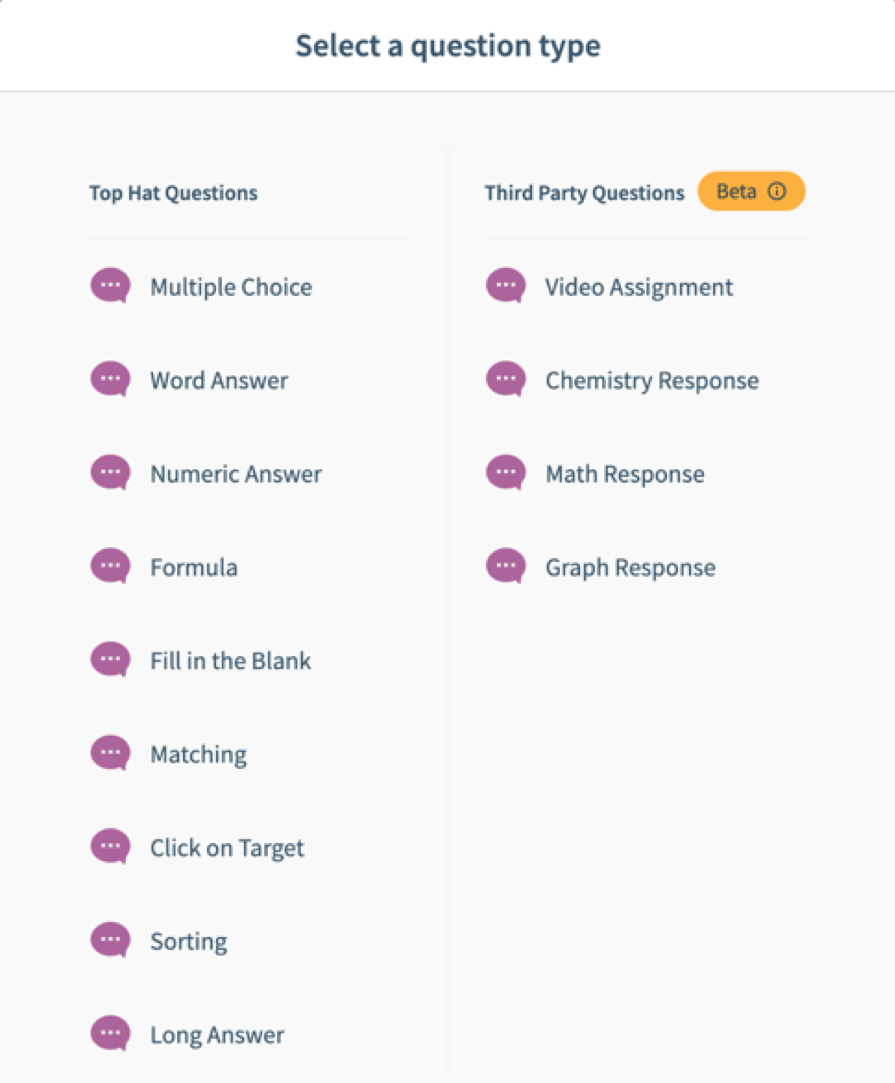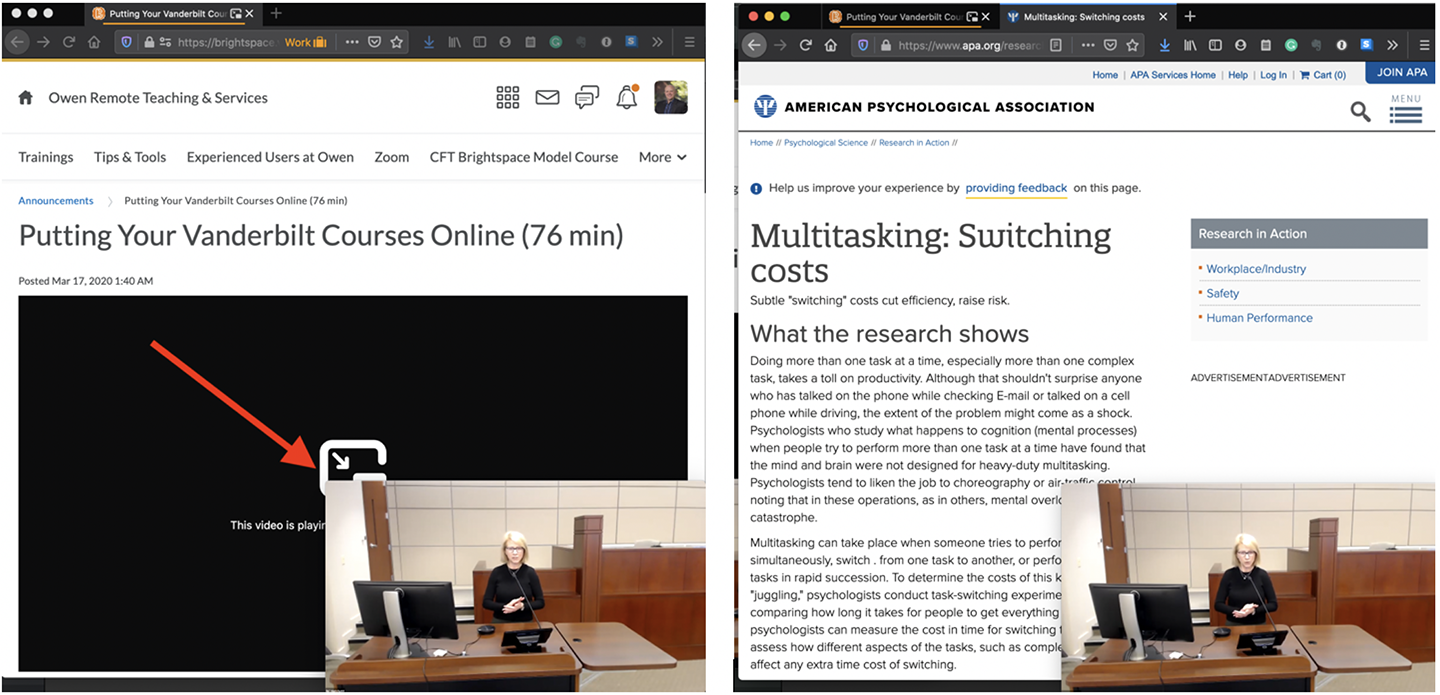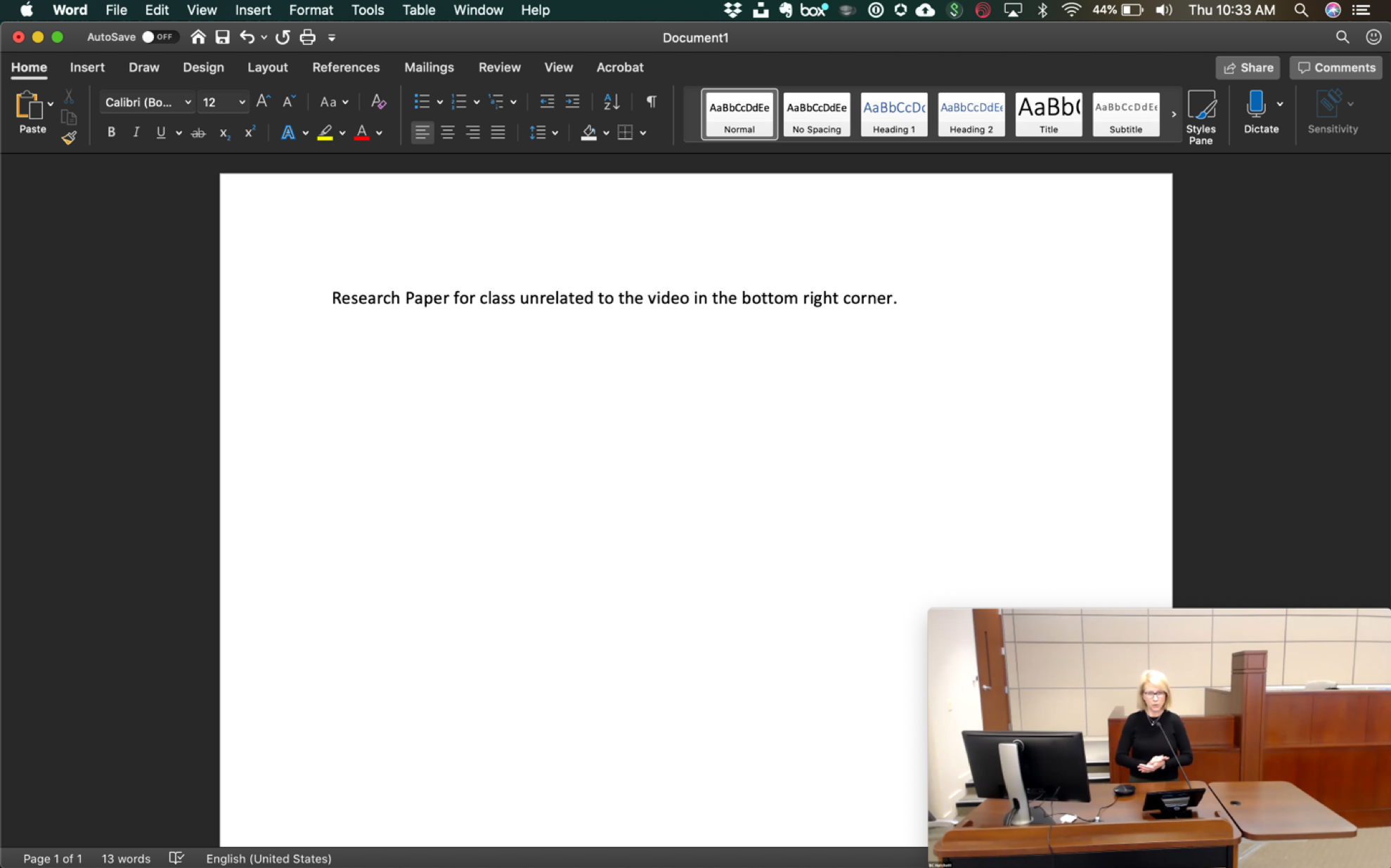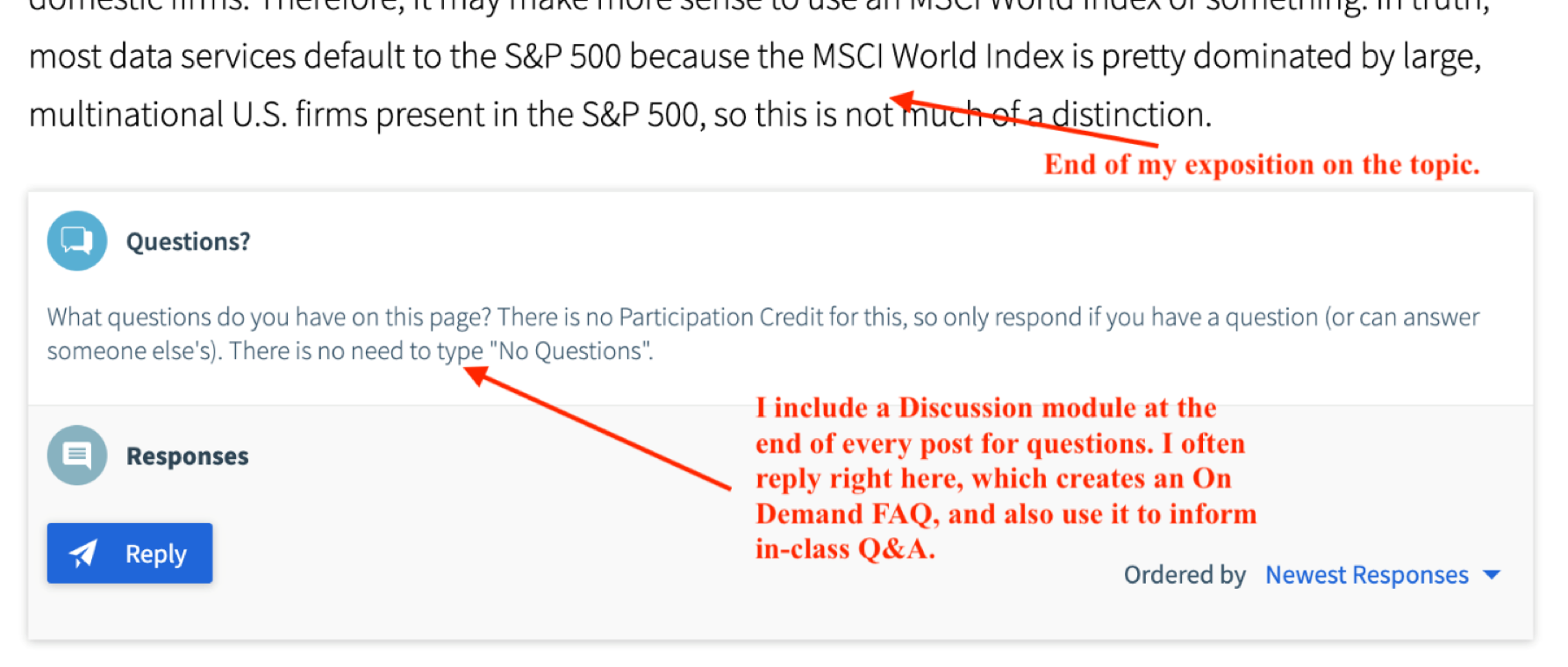Using Top Hat to drive student engagement in asynchronous learning
by Jesse Blocher, Assistant Professor of Finance
 When moving a class online, my observation is that most faculty’s first move is to create video. This is logical since much of what we do as faculty is lecture in some form or another. Video is an excellent communication tool and verbal communication is a cornerstone of education.
When moving a class online, my observation is that most faculty’s first move is to create video. This is logical since much of what we do as faculty is lecture in some form or another. Video is an excellent communication tool and verbal communication is a cornerstone of education.
However, there is a common problem with video in online learning: it is pretty easy for students to ignore. All major browsers now include picture-in-picture, which makes it even easier to “watch” a video while doing something else.
Embedding video in Brightspace to track viewing habits does not solve the problem. Because picture-in-picture is a browser feature, students can start the PiP even with videos embedded in Brightspace and then move on to their shopping, online banking, etc. Since students believe that multitasking is great, they probably think they are getting a lot done while your lecture video is running in the corner of their computer screen.
They can even “watch” your lecture while working on a research paper for another class. Amazingly productive!
Of course, we know this is unlikely to produce good results , and so a common solution is some kind of quiz or assessment to see if students have actually comprehended the material.
One option, often used in MOOCs, is to embed questions within the video. Kaltura has some ability to do this, but no ability to keep and record student responses, which minimizes the usefulness. Another option is to have a post-video quiz. This can work well, but often requires students to click somewhere else to access the quiz (even if both video and quiz are in Brightspace, for instance). We all know to keep the videos short so to not lose students attention.
In my view, the fundamental problem is that video is passive. A student can play a video and have the illusion that they are engaging when they are not. In contrast, reading is more active and engaging. You cannot read something and do your online banking at the same time. I am not advocating a return to “Read Chapter 3 for next class,” however.
 Instead, I suggest using Top Hat as a medium for communicating with a combination of text, video, images, and questions to check for understanding. Top Hat has a function called “Pages” which effectively allows you to author an interactive textbook. Sounds daunting? Perhaps, but you probably already have the content in your lectures now, so there should be little additional content development. The primary learning curve is to adapt that content for a new medium.
Instead, I suggest using Top Hat as a medium for communicating with a combination of text, video, images, and questions to check for understanding. Top Hat has a function called “Pages” which effectively allows you to author an interactive textbook. Sounds daunting? Perhaps, but you probably already have the content in your lectures now, so there should be little additional content development. The primary learning curve is to adapt that content for a new medium.
The feature in Top Hat I’m using is called “Pages.” You can think of it as a canvas on which to write formatted text and embed a variety of media including not just photos and videos, but questions of many different types. Top Hat supports many question types, not just multiple choice:
I’ll step you through the basics of how I use it. I think of each page as a blog post, typically with a single Learning Objective.
First, at the top of each page, I give a Title and Learning Objective. Top Hat allows you to assign individual pages with due dates (and times). I also like to use pictures of landscapes as “headings” for my posts rather than stock photos tangentially related to my topic.
As I’m describing a certain concept, I can embed photos to help student understanding. Here, I’ve put in a plot to show a linear regression.
Next, immediately after I’ve discussed something, I bring in a question to check understanding. These questions flow into the Top Hat grade book, which itself flows right into Brightspace.
Finally, at the bottom of every post, I include a Discussion module. I’ve found this works best to capture student questions. It has the feel of the comments section at the bottom of a blog post or article, so students are already used to commenting, etc. in this format. The big downside is that Top Hat treats it like a required element, so if I have 2 questions plus a discussion, the students see that they have 3 things to do, so answering the two questions gives them a 67% “completion” score. I’ve gotten a lot of “No questions at this time” posts to move that progress bar to 100% and this is quite distracting since only about 25% of students have real questions. You can see how I phrase the prompt and early emphasis and reminders usually work to limit it as the class progresses.
This may seem like a lot, but my experience is that the learning curve is not all that much. The interface makes is quite easy to create the content. Top Hat has provided excellent support when I have questions. If you have a concept that really, really needs a video, you can make a short video and embed it at the right time in the expositional flow (I do this, but do not show it in this example).
Further, this is 100% usable in my normal, in-person classes. Indeed, that is the context in which I developed them! They just happen to translate really well to online as well.
Resources related to this blog post
- How to use Safari’s Picture-in-Picture mode with YouTube on macOS
- How to Watch Picture-in-Picture Videos in Firefox and Chrome
- Top Hat: Visual and Interactive Elements Toolbar in Pages
.
.








Leave a Response